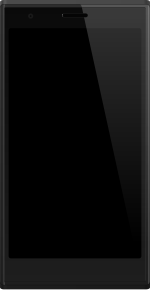Loading AI tools
Smartphone model From Wikipedia, the free encyclopedia
The Jolla smartphone (or Jolla 1 or J1)[8] is a smartphone produced by Jolla[1] that runs the Sailfish OS. Following a successful crowdfunding campaign, it was manufactured in China and released on 27 November 2013. The Jolla smartphone is no longer supported by Sailfish OS updates, the last update compatible being v3.4.0, released on 22 September 2020.[9]
This article needs additional citations for verification. (November 2013) |
 Jolla phone front | |
| Manufacturer | Qisda Corporation. |
|---|---|
| First released | 27 November 2013 |
| Availability by region | 27 November 2013 (Finnish pre-orders) / 11 December 2013 (Finland) / December 2013 (pre-orders) / Q1 2014 (worldwide) |
| Predecessor | Nokia N9 (by MeeGo, community & spiritual legacy) |
| Compatible networks | GSM/3G/4G/LTE[1][2] |
| Dimensions | |
| Weight | 141 g (0.311 lb)[1] |
| Operating system | Sailfish OS[3] |
| CPU | Qualcomm Snapdragon 400 1.4 GHz dual-core processor |
| Memory | 1 GB RAM[1] |
| Storage | 16 GB[1] |
| Removable storage | microSDHC, up to 32GB is officially supported; up to 64GB if microSDXC card is formatted to Jolla-supported formats like Fat32.[4] |
| Battery | 2100 mAh user-replaceable[1] battery Up to approximately 9 to 10 hours of talk time (GSM/3G, respectively)[1] |
| Rear camera | 8 megapixel AF camera with LED flash[1] |
| Front camera | 2 megapixel front-facing camera[1] |
| Display | 4.5" IPS qHD (960 × 540 px) "Estrade" display[1] |
| Connectivity | |
| Data inputs | Capacitive touchscreen microphone |
| Development status | Released |
| SAR |
|
| Website | jolla |


Like the Nokia N9, the Jolla diverted from the at that time conventional smartphone home button centric user interface and only featured a power button and a volume up and down rocker switch. Instead it relied on a swipe interface to close and switch between screens and applications would access a pulley menu to select menu items[10] inside applications.
In addition to the comparably limited number of native Sailfish applications available in the Jolla app store, the Jolla Phone featured the proprietary Alien Dalvik to provide support for and installing Android-applications[a] from Aptoide.

On 20 May 2013, after IamTheOtherHalf internet campaign, Jolla unveiled the following details and design of their first device:
The Sailfish OS SDK was published at the end of February 2013.
The Jolla smartphone is compatible with frequency bands in the ITU region 1: 4G (LTE) bands 3 (1800 MHz), 7 (2600 MHz) and 20 (800 MHz); 3G (WCDMA / UMTS) band 1 (2100 MHz), 8 (900 MHz); 2G (GSM) bands 850 MHz, 900 MHz, 1800 MHz, 1900 MHz. 4G and 3G will work in Europe but support is not guaranteed in other regions, even if a compatible frequency band is used.[11][12]
Jolla started shipping the phone in late November 2013. At first the phone could only be ordered on the web from within the European Union. [13]
The phone also became available in the stores of the Finnish carrier DNA on 11 December 2013.[14]
On 28 April 2014, the Jolla phone became available in Estonia at the outlets of Elisa Eesti, the first operator outside Finland to offer the phone in their shops.[13]
On 25 July 2014 Jolla opened the first Jolla store in Kazakhstan in association with Mobile Invest.[15]
On 12 August 2014 Jolla was launched in Hong Kong in a partnership with 3 Hong Kong.[16]
In September 2014, Jolla launched in India on e-retailer Snapdeal.
In November 2014, Jolla launched in Russia.
Sailfish OS updates were provided for the Jolla 1 for 7 years.
Other Linux distributions like postmarketOS continue to provide updates for the original Jolla phone but don't support calls, SMS or mobile data.[17]
Seamless Wikipedia browsing. On steroids.
Every time you click a link to Wikipedia, Wiktionary or Wikiquote in your browser's search results, it will show the modern Wikiwand interface.
Wikiwand extension is a five stars, simple, with minimum permission required to keep your browsing private, safe and transparent.